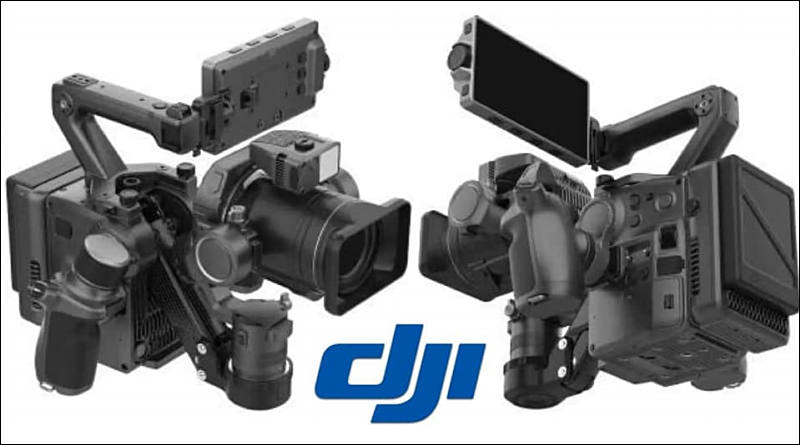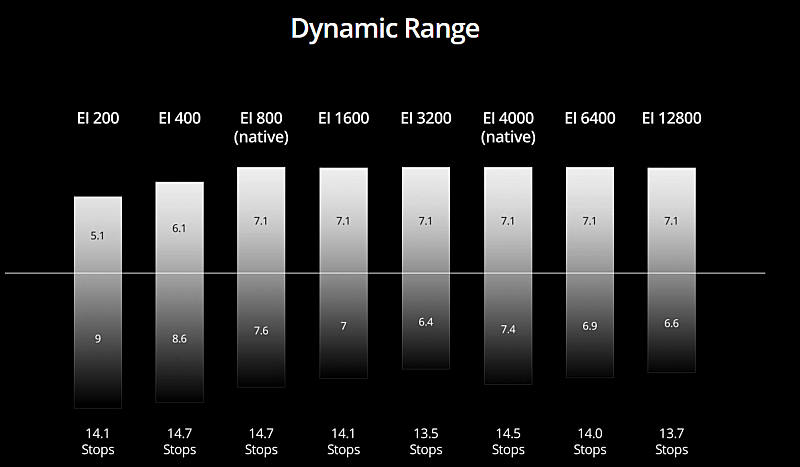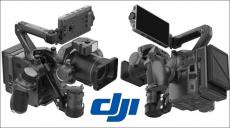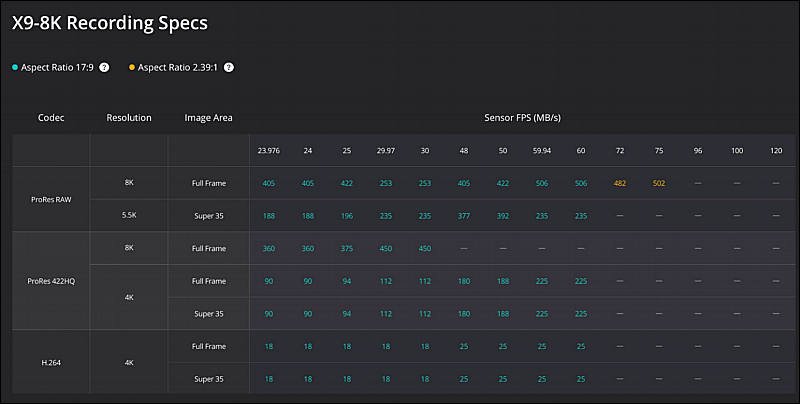
It allows to keep PV going, with more focus towards AI, but keeping be one of the few truly independent places.
-

DJI Ronin 4D offers a completely unique design. Crafted with carbon fiber and aluminum magnesium, its solid body integrates the imaging, stabilization, and focusing systems, as well as wireless transmission and control. This avoids time-consuming setup and enables quicker shooting.
Ronin 4D is equipped with Zenmuse X9, DJI’s flagship full-frame camera. It also features DJI’s latest image processing system, CineCore 3.0. This system uses DJI’s proprietary chip to provide advanced processor architecture, offering extremely high-performance computing power in a compact cinema camera. CineCore 3.0 allows Ronin 4D to support internal recording of Apple ProRes RAW, ProRes 422 HQ, and H.264 video. It also supports up to 8K/75fps and 4K/120fps video recording, delivering multiple options for professional-level creation.
- 8K model has 8K/75fps recording, 14+ Stops Dynamic Range, 800/4000 Native ISO
- 6K model has 6K/60fps 4K/120fps recording, 14+ Stops Dynamic Range, 800/5000 Native ISO
DCI 8K (8192×4320)/60fps video retains every little detail, from rich foliage to inspiring architecture, skin texture to strands of hair, all with flawless quality. For those who need to output in 4K, recording in 8K offers unprecedented creative options with more flexibility for cropping, re-composing, and stabilizing videos in post.
Zenmuse X9 supports dual native ISO (X9-8K: 800/4000; X9-6K: 800/5000), which records images with exquisite detail and minimal noise, even when filming an evening cityscape or beach, or a scene lit by dim candlelight.
With 14+ stops of dynamic range, Zenmuse X9 delivers natural transitions of highlights and shadows in complex lighting conditions such as backlit scenes and direct sunlight. These traditionally difficult scenes can now be captured easily and with confidence.
With the DJI Cinema Color System (DCCS) and robust computing power provided by CineCore 3.0, Zenmuse X9 is able to give images a cinematic look by retaining authentic and accurate colors. It also supports the industry-standard ACES workflow for effortless compatibility with the color tones of other cinema cameras.
X9 has 9-stop built-in high-quality ND filters (ND 2 to ND 512, or ND 0.3 to ND 2.7) that can be quickly and easily switched thanks to an internal motorized system. These filters were also designed to match and compliment the color science of Ronin 4D.
X9’s standard DL mount supports three compact full-frame prime lenses. The housings are made of lightweight, monocoque carbon fiber, so each lens weighs just 180 g. More DJI lenses will be available in the future.
X9 supports interchangeable lens mounts, including DJI’s proprietary DL mount as well as third-party mounts like Leica M. Ultra-wide, f/0.95 large-aperture, electronic zoom, macro, and anamorphic lenses [5] that are compatible with traditional cinema cameras also work on X9, [6] providing flexible lens options.
Whether you’re using manual or autofocus lenses, dedicated modules mounted to X9 can achieve wireless lens control and even autofocusing.
DJI Ronin 4D adds a Z-Axis to the traditional 3-axis gimbal, which effectively decreases vertical camera shake and offers stabilization performance on par with a dolly. The four axes work together with a downward ToF sensor, forward and downward dual-visual sensors, a built-in IMU and barometer, and an advanced new algorithm to bring the overall stabilization to a whole new level.
Ronin 4D integrates the imaging and stabilization systems while keeping only the sensor and necessary optical components in the gimbal camera. The tilt axis of the gimbal uses dual symmetric motors, whereas both the pan axis and the roll axis are designed with an additional stiffness buffer.
DJI’s proprietary computer vision, deep learning technology, and the robust computing power of CineCore 3.0 combine in ActiveTrack Pro, which enables cinema-standard tracking shots, even in just one take. This technology also allows subjects to be tracked from longer distances and features composition adjustment with continuous autofocusing to keep subjects in focus during tracking shots.


 sa18512.jpg959 x 534 - 60K
sa18512.jpg959 x 534 - 60K
 sa18513.jpg800 x 445 - 45K
sa18513.jpg800 x 445 - 45K
 sa18558.jpg800 x 467 - 33K
sa18558.jpg800 x 467 - 33K -

 sa18556.jpg800 x 506 - 40K
sa18556.jpg800 x 506 - 40K
 sa18555.jpg800 x 598 - 24K
sa18555.jpg800 x 598 - 24K -
The 6K version of the DJI Ronin 4D will be available for $7,199 in December 2021. It will includes the main body, a Zenmuse X9–6K gimbal camera, a LiDAR Range Finder, a High-Bright Main Monitor, Hand Grips, a Top Handle, TB50 Intelligent Battery and a carrying case. The 8K version of the DJI Ronin 4D will be available for $11,499 ‘at a later date’ and will include the Zenmuse X9–8K Gimbal Camera as well as a PROSSD 1TB. The 4D Video Transmitter, High-Bright Remote Monitor and DJI PROSSD 1TB will also be available to purchase separately.


 sa18557.jpg800 x 404 - 33K
sa18557.jpg800 x 404 - 33K -
Samples available at https://www.dji.com/ronin-4d/samples
-
PR
DJI, the global leader in civilian drones and creative camera technology, today launches a comprehensive cinematography system that heralds the next generation of film production. DJI Ronin 4D combines the all-new full-frame Zenmuse X9 gimbal camera, a 4-axis stabilization system, a LiDAR focusing system, and an unrivalled video transmission and control system in a single unit. Designed and built to the exacting standards of professional filmmakers, DJI Ronin 4D makes high-end productions more efficient, makes spectacular camera moves possible in the most convenient way, and enables creative professionals to tell their stories with an entirely new visual language.
“DJI empowers creators with accessible and intuitive devices to capture and share the world exactly how they see it,” said Paul Pan, DJI Senior Product Line Manager. “With DJI Ronin 4D, we use the power of technology to make cinema-standard production more affordable, cinema cameras more flexible, and cinematic imaging available to a boundless array of filmmakers. DJI Ronin 4D draws on our expertise in both aerial and ground-based cinematic innovations to enable the next generation of professional content creators to amaze and inspire us.”
The Most Powerful Cinematic Imaging System DJI Has Ever Created
Excellent filmmaking begins with the perfect shot, which is why DJI developed its most powerful cinematic imaging platform to date. A flagship proprietary chipset fuels an intelligent image processing system, CineCore 3.0, which delivers an internal 8K RAW codec with precise color reproduction, advanced assistive functions with a high-performance AI engine, and multi-link monitoring and control with low-latency image processing.
Complementing the imaging system is a brand-new, full-frame Zenmuse X9 gimbal camera – available in 8K and 6K versions – that allows cinematographers to capture footage in full cinematic quality. In addition to the commonly used H.264 codec, both X9-8K and X9-6K can internally record Apple ProRes and ProRes RAW, leaving more latitude for editing in post. Zenmuse X9-6K supports up to 6K/60fps and 4K/120fps, and Zenmuse X9-8K up to 8K/75fps, giving creators multiple options for capturing cinema-quality footage.
To create gripping, atmospheric shots, the dual-native EI of 800/5,000 and over 14 stops of dynamic range help capture scenes with rich color grades, regardless of shooting scenario. Even in complicated lighting situations, DJI Ronin 4D’s proprietary DJI Cinema Color System (DCCS) delivers natural skin tones and enables effortless tonal consistency across a project when using different cinema cameras. The camera’s built-in nine-stop physical ND filters make it easy to adjust to drastically changing lighting conditions, especially when outside on location.
In addition, X9 is equipped with an interchangeable lens mount design allowing connection to DJI’s proprietary DL mount, Leica M mount, and other mounts with short-flange focal distances. This provides cinematographers the opportunity to use ultra-large aperture lenses, anamorphic lenses, and vintage manual lenses, creating their desired style.
The Industry’s First Active-Vertical 4-Axis Stabilization System
DJI Ronin 4D has been designed with an innovative industry-first active Z-axis to eliminate vertical camera shake effectively. This technology allows the operator to shoot while walking, running, or moving around dynamically, with no need to practice pacing or rely on external equipment. Videos taken in complex spaces like stairways or uneven ground are smooth without any trace of the operator’s footsteps. DJI Ronin 4D even captures wide sliding shots easily, without the need for a dolly.
Building on DJI’s years of leadership in aerial and handheld stabilization, DJI Ronin 4D achieves this unprecedented fluidity with an advanced new algorithm that processes inputs from a set of downward ToF sensors, forward and downward dual-visual sensors, built-in IMU, and barometer. Even with the additional Z-axis, DJI Ronin 4D is lighter and smaller than most cinema cameras mounted on a professional three-axis stabilizer, reducing the size and complexity of a professional camera setup into an ideal form that never existed before.
ActiveTrack Pro applies more distinctive DJI technology to get complex, advanced tracking shots easily and efficiently. Based on DJI’s existing ActiveTrack system, the Pro version uses DJI Ronin 4D’s latest artificial intelligence to track subjects from longer distances while adjusting composition to maintain optimal framing.
LiDAR Transforms Professional Focusing Experience
A newly designed LiDAR Range Finder continuously generates precise laser measurements to revolutionize filmmaking with a sharper, faster, and more reliable focusing experience. It simultaneously casts over 43,200 ranging points reaching as far as 10 meters, locating subjects quickly and accurately, even in low-light environments. Because LiDAR measures the distance to the subject without relying on surface textures or hunting for edges, it obtains a faster focus speed without compromising image quality in any way.
DJI Ronin 4D offers three focusing modes to suit the needs of every creator: manual focus, autofocus, and DJI’s unique Automated Manual Focus (AMF). In manual focus, DJI Ronin 4D provides LiDAR Waveform, an assistive tool that allows cinematographers to locate focus points and pull focus with extreme precision. Autofocus keeps a sharp focus on the subject in more dynamic and unpredictable situations like documentary filmmaking. Automated Manual Focus combines the best of both modes to automatically rotate the focus wheel while following the focus point, allowing the operator to intervene manually at any time for an intuitive experience.
Ultra-Low Latency, Long-Range, and Anti-Interference Transmission
Using DJI’s all-new O3 Pro transmission technology, the 4D Video Transmitter outputs a 1080p/60fps feed to remote monitors with a transmission range of up to nearly 20,000 feet. It also includes AES 256-bit encryption that protects the video feed and industry-leading end-to-end low latency for a smooth, real-time monitoring experience as operators move freely about the set.
In addition to 2.4GHz and 5.8GHz, O3 Pro also supports the DFS frequency band, significantly improving stability and anti-interference performance, even in crowded signal environments and locations that feature complex architectural structures. This system also enables multiple receivers with one transmitter and allows users to switch feeds quickly between multiple Ronin 4Ds.
The additional High-Bright Remote Monitor integrates a wireless video receiver into a 1,500-nit, 7-inch monitor. The built-in gyro sensor also turns the monitor into a motion controller for movement-based camera control. It can also connect to the Ronin 4D Hand Grips, DJI Master Wheels, DJI Force Pro, or the new DJI Three-Channel Follow Focus to modernize coordinated shoots. When several remote monitors are used in conjunction, each device can play back material separately with independent LUT, loaded without interfering with other monitors. The monitor’s built-in microSD card slot supports up to 1080p/60fps proxy footage recording.
Storage, Sound Recording, and Battery Life
To meet the needs of a wide range of users, DJI Ronin 4D offers three storage methods. USB SSD provides 4K projects with a cost-effective solution. The CFexpress Type-B card offers compatibility and stability. DJI’s proprietary PROSSD 1TB delivers the best performance and highest stability for internal recording at maximum resolution and frame rate.
For sound recording, DJI Ronin 4D has built-in microphones to support 2-channel 24-bit audio. It also has two 3.5mm jacks on the body and two XLR ports on the Expansion Plate for additional input and output options.
Like Ronin 2 and Inspire 2, DJI Ronin 4D uses the TB50 Intelligent Battery, which offers up to 2.5 hours of shooting time. Even in extreme weather conditions, the TB50 battery is still reliable with the help of auto-heating technology.
Co-Developed with Industry Leaders
DJI Ronin 4D comes as the solution that cinematographers all over the world have been looking for. Leading cinematography professionals have been testing prototype after prototype, giving constant feedback, and working with DJI every step of the way until Ronin 4D was complete. But the collaboration doesn’t end there. Starting today, DJI is pleased to announce that eight of the industry’s leading and award-winning DPs will work directly with DJI and Ronin 4D for their upcoming works. These include: Rodney Charters, ASC, CNSC, NZCS; Takuro Ishizaka, JSC; Rachel Morrison, ASC; XiaoShi Zhao, CNSC; and Academy Award winners for Best Cinematography: Erik Messerschmidt, ASC; Claudio Miranda, ASC; and Peter Pau, HKSC.
Pricing and Availability
DJI Ronin 4D is available in 8K and 6K combos. The 6K version features the Main Body, a Zenmuse X9-6K Gimbal Camera, LiDAR Range Finder, High-Bright Main Monitor, Hand Grips, Top Handle, TB50 Intelligent Battery, and Carrying Case; it is priced at $7,199 and will be available from store.dji.com and in other channels starting in December. The 8K version features a more powerful Zenmuse X9-8K Gimbal Camera and a PROSSD 1TB; it is priced at $11,499 and will be available from store.dji.com and other channels at a later date. To utilize Ronin 4D to its full potential, the 4D Video Transmitter, High-Bright Remote Monitor, and DJI PROSSD 1TB are available separately.
DJI Ronin 4D comes with a 2-year International Warranty for quick service at any authorized service center worldwide. For extra assurance, DJI Care Pro offers two years of comprehensive services, including technical assistance, unlimited free repairs within the coverage limit, and two maintenance services by DJI technical experts.
-
I prefer a lot my steadycam. I can mount any camera+lenses+FIZ on it. I hate the gimbal's dead band/lag of pan and tilt axis. You can't frame precisely with a gimbal.
Howdy, Stranger!
It looks like you're new here. If you want to get involved, click one of these buttons!
Categories
- Topics List23,978
- Blog5,724
- General and News1,351
- Hacks and Patches1,153
- ↳ Top Settings33
- ↳ Beginners255
- ↳ Archives402
- ↳ Hacks News and Development56
- Cameras2,363
- ↳ Panasonic991
- ↳ Canon118
- ↳ Sony156
- ↳ Nikon96
- ↳ Pentax and Samsung70
- ↳ Olympus and Fujifilm100
- ↳ Compacts and Camcorders300
- ↳ Smartphones for video97
- ↳ Pro Video Cameras191
- ↳ BlackMagic and other raw cameras117
- Skill1,961
- ↳ Business and distribution66
- ↳ Preparation, scripts and legal38
- ↳ Art149
- ↳ Import, Convert, Exporting291
- ↳ Editors191
- ↳ Effects and stunts115
- ↳ Color grading197
- ↳ Sound and Music280
- ↳ Lighting96
- ↳ Software and storage tips267
- Gear5,414
- ↳ Filters, Adapters, Matte boxes344
- ↳ Lenses1,579
- ↳ Follow focus and gears93
- ↳ Sound498
- ↳ Lighting gear314
- ↳ Camera movement230
- ↳ Gimbals and copters302
- ↳ Rigs and related stuff272
- ↳ Power solutions83
- ↳ Monitors and viewfinders339
- ↳ Tripods and fluid heads139
- ↳ Storage286
- ↳ Computers and studio gear560
- ↳ VR and 3D248
- Showcase1,859
- Marketplace2,834
- Offtopic1,319







